
Words and photographs by Walt Stearns
Small things are a big attraction at Wakatobi. The resort’s pristine reefs are home to an astounding collection of diminutive and colourful forms of marine life, much to the delight of critter spotters and macro photography enthusiasts.
Wakatobi’s dive guides are experts at finding and pointing out these tiny treasures, but you can do some productive critter spotting on your own — you just need to know where to look.
Nemo’s roommates
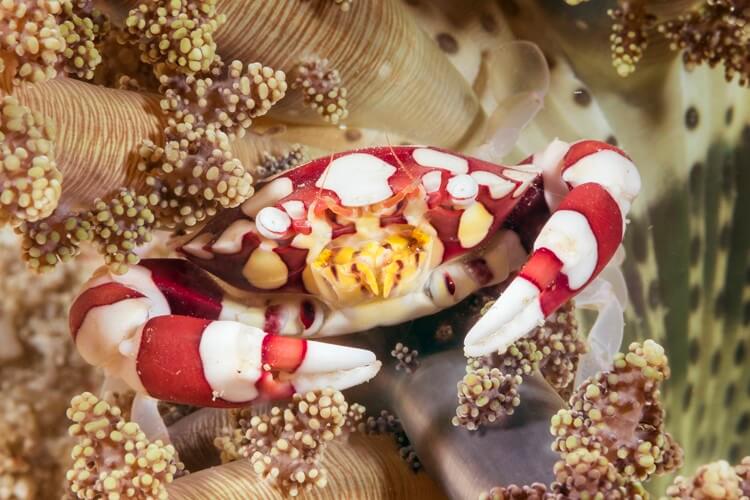
Locate a sea anemone and you’ll probably run into some of Nemo’s cohabiting cousins. After you snap some requisite portraits of these colourful clown fish, linger a bit and take a closer look among the undulating tentacles.
While you are most likely will find a porcelain crab (Porcellanidae sp.) or two, you just might happen upon a harlequin crab (Lissocarcinus laevis) as well, going about searching for food scraps from its host’s leftover dinner.
In exchange for free meals and the protection the anemone’s tentacles provide, these crabs also provide the valuable service of removing excess mucus and dead tissue from the anemone’s body.

Then there are the shrimp. Anemones host a colourful collection of cryptic crustaceans. You’ve got your white-spot anemone shrimp (Periclimenes brevicarpalis) which also goes by magnificent anemone shrimp, peacock-tail shrimp, and clown anemone shrimp, and the beautiful but unfortunately named scarlet skunk cleaner shrimp (Lysmata amboinensis), just to name a few.
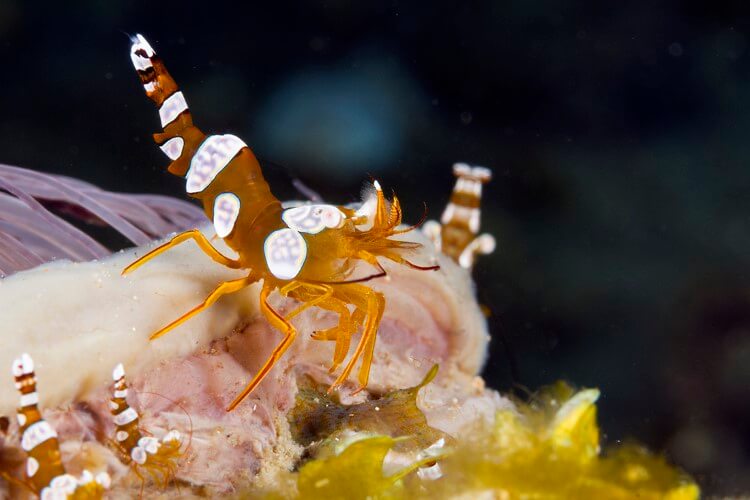
A favourite find is the sexy anemone shrimp (Thor amboinensis) – so named for the suggestive swaying of its tail to mimic the undulating action of the anemone’s tentacles.
Fan favourites
Sea fans are a ubiquitous sight on Wakatobi walls and outer reef slopes. These flattened soft corals extend branching networks of polyps to harvest a smorgasbord of current-driven plankton. And they aren’t the only ones waiting to enjoy this moving feast of tiny snacks.

Sea fans are the place to find some of Wakatobi’s most magnificent miniatures – the pygmy sea horses. These little guys are so good at hiding that they remained unknown to science until 1969, after which the first known species, Hippocampus bargibanti, Bargibant’s seahorse, was formally described in 1970
To date, there are nine known species of pygmy sea horses in the ocean – the most recently discovered described in 2020 – five of which can be found on the sea fans of Wakatobi. It takes a keen eye to locate a pygmy seahorse, and they often grow no larger than a human fingernail and sport excellent camouflage that helps them blend with their host.
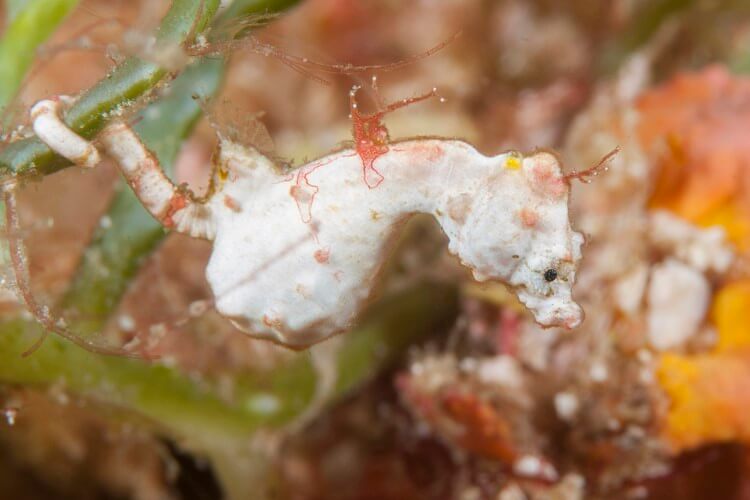
The good news is that pygmies stay close to home and may spend their entire life on the same sea fan. Just ask a dive guide for help, and they can likely direct you to the right branch.
Perpetual motion predators
Sea fan clusters are a favourite haunt of the longnose hawkfish (Oxycirrhites typus). The distinctive red-and-white crosshatch patterning of this keen-eyed little predator makes it a favourite subject for underwater photographers.
Though they can grow to sizes of three to four inches, hawkfish can be difficult to spot, as their colour pattern blends perfectly with the tangling branches of a red or orange gorgonian. Keep looking, because it won’t take long for a hawkfish to give its position away.
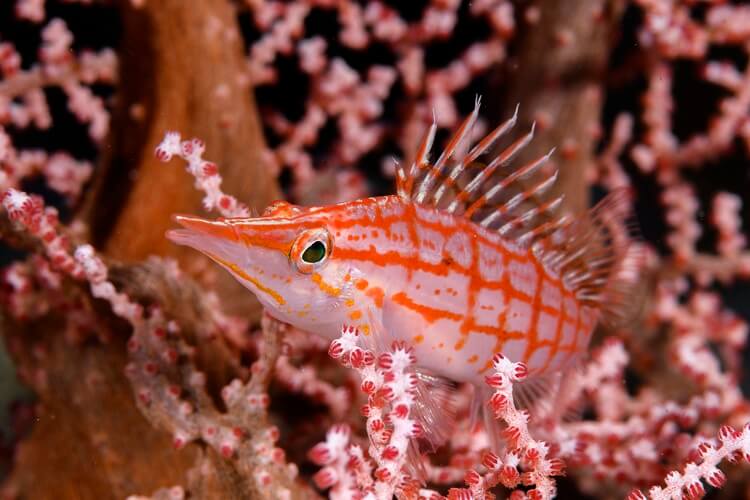
Unlike most ambush predators, the hawkfish is a hunter that is constantly on the move, often pausing for just a brief interval before repositioning to the next spot in an ongoing search for prey.
One successful strategy for observing and photographing a hawkfish is to stake out the fish’s last-known position and wait. Hawkfish have a habit of returning to favourite ambush points on a regular basis, and that’s when you can grab the shot. Just don’t try to get to close, or it will be gone in an instant.
More from Wakatobi
Wired in
You may need to dive a bit deeper to see a sea whip goby (Bryaninops sp.), as they are found almost exclusively on a type of black wire coral that prefers a bit of depth. So not only will you be searching in lower light, you will be looking for a small and often stationary fish that is nearly invisible.
Sea whip gobies have translucent bodies that filter ambient light to match the colour of their surroundings, and their torso sports horizontal bars that mimic the protruding polyps of their coral perch. Additional adaptations include gills set low on the underside of the body for minimal visibility, pelvic fins shaped like suckers to hold on to their host and big eyes to spot any potential meal drifting by.
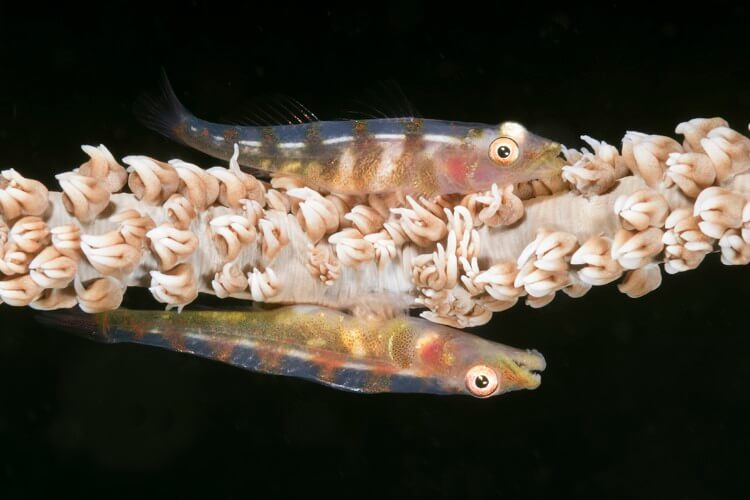
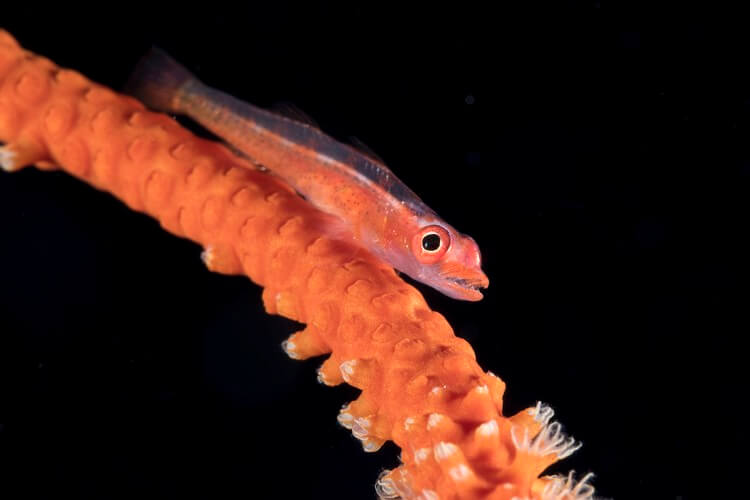
Once you do locate a sea whip goby, you may end up in a game of hide-and-seek. Their sharp eyesight will alert them to your approach, at which point they will probably move to the far side of their branch to avoid detection. This game may go on for some time as they dart about to keep the branch between themselves and any bubble-slowing intruder.
You may have better luck during a night dive, as they tend to move about a bit less after dark. Once you’ve found one goby, look for another because these fish often form mating pairs. When these fish are in parenting mode, they will lay a clutch of eggs on a dead portion of the coral, and one of the parents will stand watch. Find the eggs and you’ll likely find the gobies as well.
Barrels with hair
One small find at Wakatobi that won’t require a lot of looking is the pink hairy squat lobster (Lauriea siagiani), aka fairy crab. This small crustacean – which is technically neither a lobster nor a crab — sets up house in a giant barrel sponge. Find a sponge, look on its underside, and you’ll likely locate one of these dainty creatures. Just be sure to move in slow, as they may go into hiding in the presence of a perceived threat.
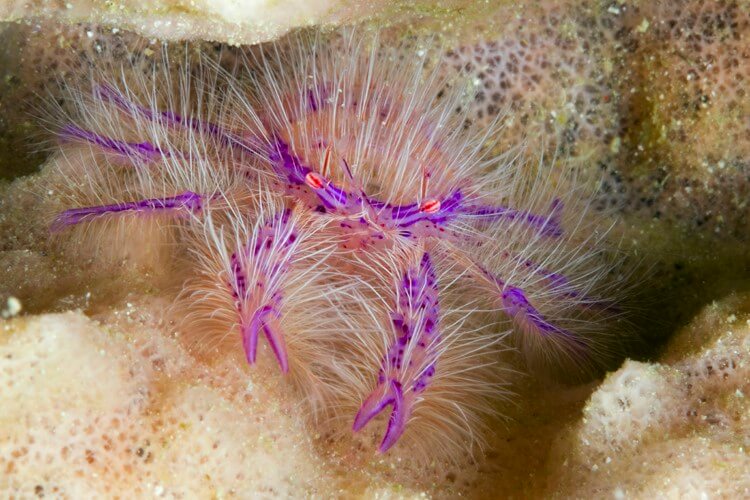
There are actually a number of species of squat lobster you can find at Wakatobi, but it is the pink hairy ones that are the photogenic favourites. Their semi-translucent body armour takes on a pearl-like glow in the light, while the delicate nature of its body is further accentuated by a coat of fine white hair, which is more than ornamental.
Pink hairy squat lobsters are plankton feeders, and that hair coat collects drifting morsels, which are then groomed from the protruding filaments to make a meal.
When scoping out the barrel sponges for hairy squat lobsters, don’t forget to check out the crinoids are often perched around the top. Down around where the crinoid affixes themselves to the sponge, is close kin of the hairy’s, the crinoid crab which is another variety of squat lobster belonging to the genus Allogalathea.
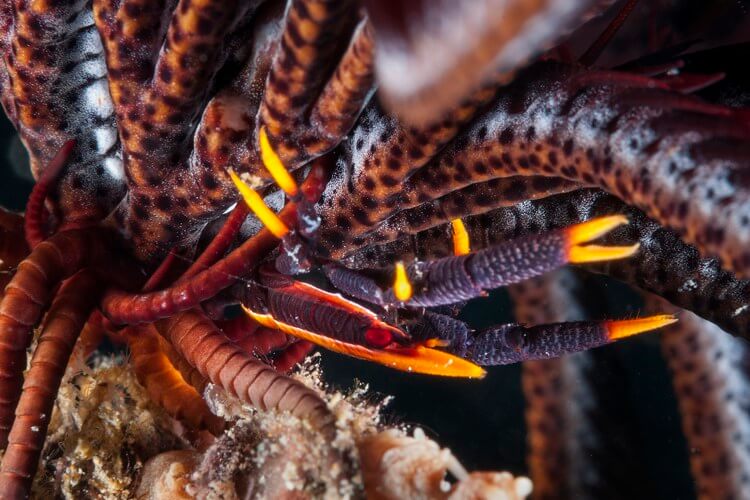
The fascinating trait of these little crustaceans is their body colouration often closely match that of their host to allow them to blend in.
This is just a sample of the fantastic and fascinating marine life you can discover at Wakatobi, where divers and snorkellers enjoy exclusive access to one of the world’s best-protected and most bio-diverse coral reef ecosystems.
Learn more about Wakatobi’s fantastic beasts on the Wakatobi Flow blog pages; for enquiries and reservations, visit www.wakatobi.com


